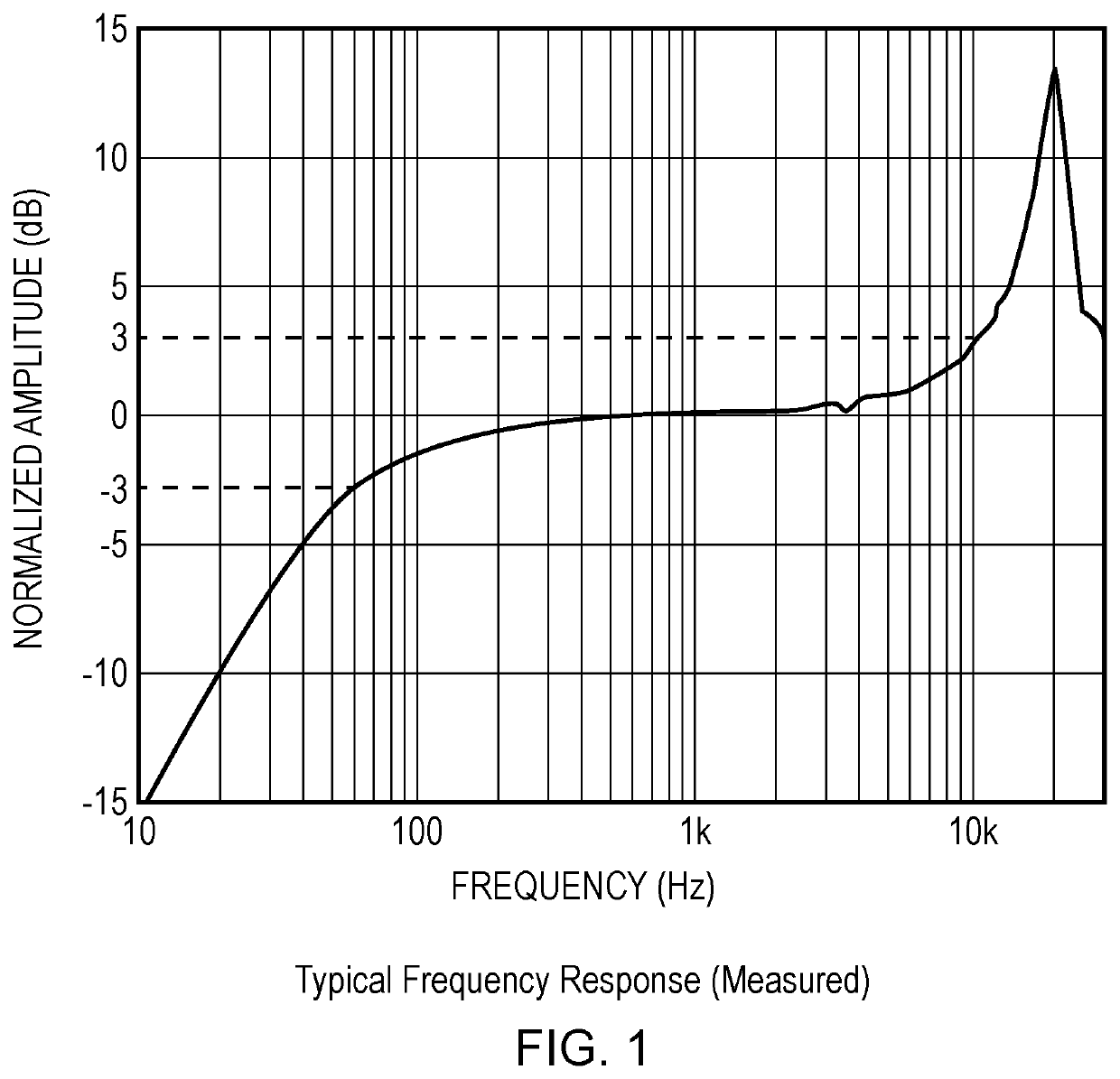MEMS devices and processes
a microelectromechanical system and process technology, applied in the direction of diaphragm construction, electrostatic transducers of semiconductor, loudspeakers, etc., can solve the problems of minimal or negligible flow path size, high pressure impulse incident on the transducer, damage to the transducer, etc., to improve strength and reduce the effect of affecting the robustness of the membrane layer and reducing the impact of pressur
- Summary
- Abstract
- Description
- Claims
- Application Information
AI Technical Summary
Benefits of technology
Problems solved by technology
Method used
Image
Examples
Embodiment Construction
[0015]According to an example embodiment of a first aspect there is provided a MEMS transducer comprising:
[0016]at least one slit provided in the membrane layer to separate a region of the membrane layer from the rest of the membrane layer, the region forming a first moveable portion of a vent structure, the first moveable portion being able to deflect away from the plane of the rest of the membrane layer in response to a pressure differential across the membrane, wherein when the first moveable portion is substantially in-plane with the rest of the membrane layer, the vent structure comprises at least one opening in the membrane layer.
[0017]Thus, according to example embodiments, the vent structure is provided with at least one opening in the membrane material for tuning the frequency response, in particular the low frequency response, of the transducer.
[0018]The opening for tuning the frequency response of the transducer, which is provided at the vent structure, c...
PUM
 Login to View More
Login to View More Abstract
Description
Claims
Application Information
 Login to View More
Login to View More - R&D
- Intellectual Property
- Life Sciences
- Materials
- Tech Scout
- Unparalleled Data Quality
- Higher Quality Content
- 60% Fewer Hallucinations
Browse by: Latest US Patents, China's latest patents, Technical Efficacy Thesaurus, Application Domain, Technology Topic, Popular Technical Reports.
© 2025 PatSnap. All rights reserved.Legal|Privacy policy|Modern Slavery Act Transparency Statement|Sitemap|About US| Contact US: help@patsnap.com



